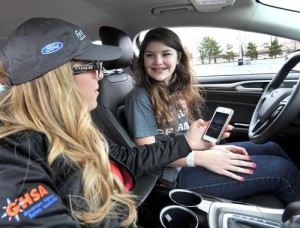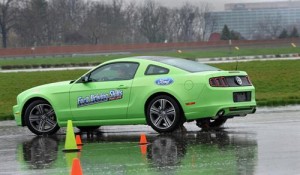- Survey commissioned by Ford shows parents and teens wrongly perceive the winter months to be the most deadly time for teens on the road
- 76 percent of teens and 83 percent of parents consider the dangers of distracted driving to be comparable to drunk driving, yet parents are 40 percent more likely to check their phones while driving than their teenage children
- Parents are concerned about their teens having safe driving habits, but only 26 percent of parents surveyed use a safety device to reinforce safe driving habits
- Survey shows risks differ between genders; teenage boys are more likely to engage in aggressive driving behaviors, while teenage girls are more likely to engage in distractions that are social in nature
 DEARBORN, Mich., June 11, 2013 – As summer begins, what can be the most fun season of the year for teens can also be the riskiest. A new survey conducted by Penn Schoen Berland and commissioned by Ford reveals new insights about teen driving habits and perceptions. The survey polled teen drivers and parents, and reveals some surprising results.
DEARBORN, Mich., June 11, 2013 – As summer begins, what can be the most fun season of the year for teens can also be the riskiest. A new survey conducted by Penn Schoen Berland and commissioned by Ford reveals new insights about teen driving habits and perceptions. The survey polled teen drivers and parents, and reveals some surprising results.- 62 percent of teen drivers admit to being distracted by others in the car
- 61 percent of teens admit to eating or drinking while driving
- 42 percent of teens say they turn up the radio so loud they can’t hear vehicles nearby
- 51 percent of teens say they listen to an iPod or MP3 player
 “Ford has a long record as a safety leader, and continues to work through many channels to help address the risk factors associated with inexperienced drivers,” said Steve Kenner, global director, Automotive Safety Office, Ford Motor Company. “Features such as MyKey and programs such as Ford Driving Skills for Life help parents and teens as they develop the skills needed to control a vehicle, detect hazards and assess driving situations.”
“Ford has a long record as a safety leader, and continues to work through many channels to help address the risk factors associated with inexperienced drivers,” said Steve Kenner, global director, Automotive Safety Office, Ford Motor Company. “Features such as MyKey and programs such as Ford Driving Skills for Life help parents and teens as they develop the skills needed to control a vehicle, detect hazards and assess driving situations.”- Boys are considered to be more aggressive drivers, according to 87 percent of girls, 78 percent of parents and 73 percent of boys
- Boys are considered more likely to drink and drive, according to 80 percent of girls, 72 percent of boys and 72 percent of parents
- Boys are considered more likely to speed, according to 81 percent of girls, 77 percent of boys and 75 percent of parents
- Girls are considered more likely to use their phones while driving, according to 81 percent of boys, 78 percent of girls and 67 percent of parents
 The survey also found that despite reporting lower rates of the riskiest behaviors overall, parents are 40 percent more likely to check their phones while driving than their teenage children (28 percent of parents compared to 20 percent of teens).
The survey also found that despite reporting lower rates of the riskiest behaviors overall, parents are 40 percent more likely to check their phones while driving than their teenage children (28 percent of parents compared to 20 percent of teens).Ford is concerned about the safety of new drivers and has reached many teen drivers with its Driving Skills for Life program. In 2013 Ford DSFL is doubling the number of students it reaches with its hands on driving programs to approximately 40,000. This includes visits to at least 40 high schools in Arizona, California, Illinois, Michigan, Oklahoma, Tennessee, Texas and Virginia with an array of activities focused on common driving challenges faced by teen drivers. Teens will experience real-world driving situations in a controlled environment using specially equipped vehicles. The hands-on clinics offer professional drivers and activities that build skills in five key areas: driver distraction, speed management, space management, vehicle handling and hazard recognition.
